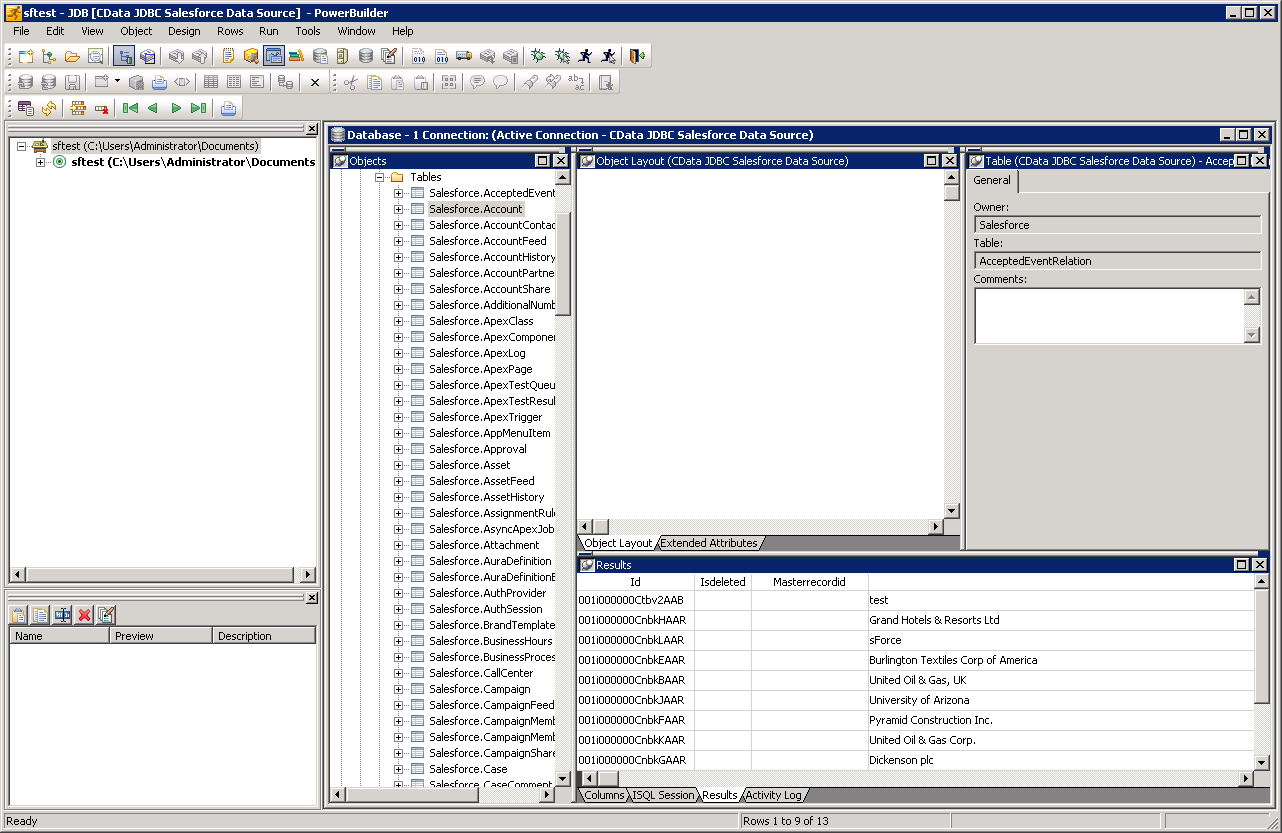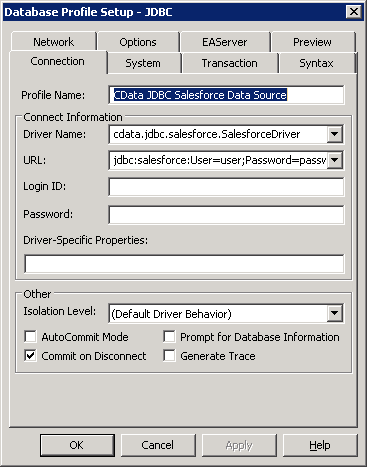Discover how a bimodal integration strategy can address the major data management challenges facing your organization today.
Get the Report →Connect to Authorize.Net Data from PowerBuilder
This article demonstrates how to access Authorize.Net data from PowerBuilder using the Authorize.Net JDBC Driver.
The CData JDBC Driver for Authorize.Net is a standards-based control that can be used from any platform or development technology that supports JDBC, including PowerBuilder. This article shows how to use the CData JDBC Driver for Authorize.Net in PowerBuilder.
This article shows how to create a basic PowerBuilder application that uses the CData JDBC Driver for Authorize.Net to retrieve data.
Connect to Authorize.Net Data from PowerBuilder
Follow the steps below to use the Database Painter tool to create a database profile based on an JDBC URL for Authorize.Net. You can use a database profile to save connection properties. In the Database Painter, you can graphically manipulate data as well as execute SQL queries.
Add the driver JAR to the PowerBuilder classpath. Set the CLASSPATH system environment variable to the path to the driver JAR, located in the lib subfolder of the installation directory.
Note: If you are using PowerBuilder Classic, you can also add the path to the driver JAR by clicking Tools -> System Options -> Java.
- Click Tools -> Database Painter.
- Right-click the JDBC node and click New Profile.
- In the Database Profile Setup dialog, enter the following:
- Profile Name: Enter a user-friendly name for the profile.
- Driver Name: Enter the class name of the driver, cdata.jdbc.authorizenet.AuthorizeNetDriver
- URL: Enter the JDBC URL.
You can obtain the necessary connection properties on the Security Settings -> General Settings page after logging into your Merchant Account.
- UseSandbox: The Authorize.Net API to be used to process transactions. If you are using a production account, this property can be left blank. If you are using a developer test account, set this to 'TRUE'.
- LoginID: The API login Id associated with your payment gateway account. This property is used to authenticate that you are authorized to submit website transactions. Note that this value is not the same as the login Id that you use to log in to the Merchant Interface.
- TransactionKey: The transaction key associated with your payment gateway account. This property is used to authenticate that you are authorized to submit website transactions.
Built-in Connection String Designer
For assistance in constructing the JDBC URL, use the connection string designer built into the Authorize.Net JDBC Driver. Either double-click the JAR file or execute the jar file from the command-line.
java -jar cdata.jdbc.authorizenet.jarFill in the connection properties and copy the connection string to the clipboard. A typical JDBC URL is below:
jdbc:authorizenet:LoginId=MyLoginId;TransactionKey=MyTransactionKey;
![The JDBC data source defined in the Database Profile Setup dialog. (Salesforce is shown.)]()
- To view and modify a table, right-click a table and then click Edit Data -> Grid.

Using Authorize.Net Data with PowerBuilder Controls
You can use standard PowerBuilder objects to connect to JDBC data sources and execute queries. The following example shows how to retrieve Authorize.Net data into a DataWindow. You can add the following code to the open method:
SQLCA.DBMS = "JDBC"
SQLCA.AutoCommit = False
SQLCA.DBParm = "Driver='cdata.jdbc.authorizenet.AuthorizeNetDriver',URL='jdbc:authorizenet:LoginId=MyLoginId;TransactionKey=MyTransactionKey;";
CONNECT USING SQLCA;
dw_settledbatchlist.SetTransObject(SQLCA);
dw_settledbatchlist.Retrieve();







